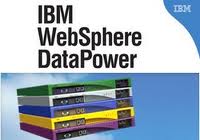| ウェブサイトをできるだけ多くの言語で地域化しようとしていますが、このページは現在Google Translateにより機械翻訳されています。 | 終了 |
-
-
製品
-
資料
-
サポート
-
会社
-
ログイン
-
.ffd ファイル拡張子
開発者: Contivo/IBMファイルの種類: Contivo VMS File/Flat File Descriptor Fileあなたがで終わるファイル拡張子を持つファイルを持っているので、あなたはここにいる .ffd. ファイル拡張子を持つファイル .ffd 特定のアプリケーションだけで起動することができます。それがいる可能性があります .ffd ファイルは、それらが全く観察されることを意図していないことを意味するデータ·ファイルではなく、ドキュメントまたは媒体である。何です .ffd ファイル?
.ffdファイルの拡張子は、多くのプログラムで使用されています。このファイル形式はまた、それらのVMSアプリケーションのContivoによって開発され、使用されています。 .ffdファイルの拡張子は、フラットファイル記述子であり、このユーティリティは、IBM WebSphere DataPowerのに実装されています。これらのファイルは、ハードウェアまたはソフトウェアで使用されているかどうか、それは、変換することができる.ffdにファイルをXMLのフォーマット。これらのアプリケーションは、またしてファイルを開くために使用することができ.ffd延長、およびMicrosoft Windowsの広く使用されているバージョンの上で実行するコンピュータの互換性サポートは、これらのプログラムに統合されています。開く方法 .ffd ファイル?
起動 .ffd ファイル、または、それをダブルクリックして、PC上の他のファイル、。あなたのファイルの関連付けが正しく設定されている場合は、意味のアプリケーションが開くように .ffd ファイルには、それを開きます。それはあなたが適切なアプリケーションをダウンロードしたり購入する必要があります可能性があります。それは、あなたのPC上で適切なアプリケーションを持っている可能性もありますが、 .ffd ファイルはまだそれに関連付けられていない。このケースでは、開こうとすると、 .ffd ファイルは、そのファイルの正しい1であるアプリケーションは、Windowsを伝えることができます。それ以降、開く .ffd ファイルには、適切なアプリケーションを開きます。 .ffdファイルの関連付けのエラーを修正するには、ここをクリックしてください開くアプリケーション .ffd ファイル
 Microsoft Notepad
Microsoft NotepadMicrosoft Notepad
Notepad is a basic text editor used to create plain documents. It is commonly used to view or edit text (.txt) files, and a simple tool for creating Web pages, and supports only the basic formatting in HTML documents. It also has a simple built-in logging function. Each time a file that initializes with .log is opened, the program inserts a text timestamp on the last line of the file. It accepts text from the Windows clipboard. This is helpful in stripping embedded font type and style codes from formatted text, such as when copying text from a Web page and pasting into an email message or other “What You See Is What You Get†text editor. The formatted text is temporarily pasted into Notepad, and then immediately copied again in stripped format to be pasted into the other program. Simple text editors like Notepad may be utilized to change text with markup, such as HTML. Early versions of Notepad offered only the most basic functions, such as finding text. Newer versions of Windows include an updated version of Notepad with a search and replace function (Ctrl + H), as well as Ctrl + F for search and similar keyboard shortcuts. It makes use of a built-in window class named edit. In older versions such as Windows 95, Windows 98, Windows Me and Windows 3.1, there is a 64k limit on the size of the file being edited, an operating system limit of the EDIT class. Contivo VMS
Contivo VMSContivo VMS
Contivo Vocabulary Management Solutions can help users in capturing, managing, organizing and leveraging all of the integrated metadata in an enterprise. Contivo Vocabulary Management Solution (VMS) is a B2B/EAI solution for data transformation and semantic integration into enterprise ready metadata. The Contivo VMS suite consists of the Contivo Analyst, Repository and Builder products. The Contivo Analyst allows users to customize the integration maps through adding transformation rules, testing the maps and deploying the transformation code into integration runtime environments. The Contivo Repository provides semantic and communications foundation for the Contivo VMS suite. It has Web-based search and analysis capabilities that provides architectural information for the overall integration data architecture. The Contivo Builder models the field that a service needs and generates documented minimal conforming subset XML schemas for the service, it reconciles new versions of a schema against existing data models. Contivo Map Intuition guides users in the process of looking for optimal mapping scenarios. It applies artificial intelligence to the mapping process in order to produces more accurate maps. IBM WebSphere DataPower
IBM WebSphere DataPowerIBM WebSphere DataPower
IBM WebSphere DataPower optimizes, simplifies and governs applications and delivery of services and enhances security of IT and XML services. It provides a multitude of functions to enhance infrastructure capabilities. It has service-oriented architecture appliances to enhance its capabilities. These are WebSphere DataPower Integration Appliance X152 that is created for hardened security and simplified deployment to perform conversions at wirespeed and bring multiple protocols, WebSphere DataPower Service Gateway XG45 to secure applications, data and Web services with customizable, automated and scalable governance and service visibility while featuring lightweight integration, WebSphere DataPower X150B and X150z that provide integration, common message transformation and routing to improve performance and cut costs, WebSphere DataPower B2B appliance XB62 extends IBM’s hardware ESB with B2B hardware providing AS1/2/3 trading and messaging partner profile management, WebSphere DataPower XC10 that delivers hardened security and exceptional performance at the caching layer of your enterprise infrastructure, WebSphere DataPowerEdge Applicance XE82 integrates traffic gateway functions and authorization mechanisms to provide a solution for edge-of-network traffic.戒めの言葉
上の拡張子の名前を変更しないように注意してください .ffd ファイル、またはその他のファイル。これは、ファイルの種類を変更することはありません。特殊な変換ソフトウェアを別のファイルタイプのファイルを変更することができます。ファイルの拡張子は何ですか?
ファイル拡張子は、ファイル名の末尾の3つまたは4つの文字の集合であり、この場合には、 .ffd. ファイル拡張子は、それがファイルのタイプを教えてくれて、それを開くことができますどのようなプログラムは、Windowsを教えてください。あなたがファイルをダブルクリックすると、プログラムが自動的に起動するように、Windowsは、多くの場合、各ファイルの拡張子を既定のプログラムに関連付けます。そのプログラムがPC上でなくなったときに、関連付けられたファイルを開こうとすると、時々エラーを取得することはできません。コメントを残す

